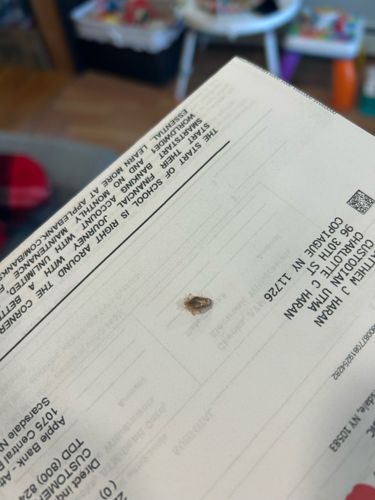Flea
Scientific Name: Ctenocephalides felis (cat flea - most common species found on domestic animals and often infesting homes), Ctenocephalides canis (dog flea), Pulex irritans (human flea), and various other species within Siphonaptera.
Order & Family: Order Siphonaptera, Family Pulicidae (common fleas, e.g., cat flea, dog flea)
Size: Adult fleas typically range from 1.5 to 3.3 mm in length. They are laterally flattened (thin from side to side) and wingless.

Natural Habitat
Fleas primarily live on the bodies of their hosts (e.g., cats, dogs, rodents, humans, birds) and in the immediate environment of the host, such as bedding, carpets, furniture, cracks in floors, and outdoor shaded areas where hosts rest. They thrive in warm, humid conditions.
Diet & Feeding
Adult fleas are obligate hematophagous parasites, feeding exclusively on the blood of their warm-blooded hosts (mammals and birds). Larval fleas feed on organic detritus, including adult flea feces, skin flakes, and other organic matter found in the host's environment.
Behavior Patterns
Fleas are ectoparasites, meaning they live on the outside of their hosts. They are highly agile jumpers, capable of leaping great distances both horizontally and vertically, which aids in host seeking and escaping threats. Adult fleas spend most of their lives on a host, feeding regularly. Females lay eggs after a blood meal, which typically fall off the host into the environment. Larvae feed on organic debris, especially adult flea feces (flea dirt). Pupation occurs in a cocoon, and adults emerge when stimulated by vibrations, warmth, or carbon dioxide, signaling a potential host is near. They can survive for significant periods without a blood meal as adults inside their cocoons.
Risks & Benefits
Risks: Fleas are significant pests. Their bites cause itching, skin irritation, allergic reactions (flea allergy dermatitis), and secondary skin infections in hosts and humans. They can transmit diseases to humans and animals, including bubonic plague (Yersinia pestis), murine typhus (Rickettsia typhi), and serve as intermediate hosts for tapeworms (e.g., Dipylidium caninum). Benefits: In most ecological contexts, fleas are considered pests with few direct benefits to humans or the ecosystem beyond being a food source for some predators. However, their role in disease transmission has contributed to scientific understanding of epidemiology and parasite ecology.
Identified on: 8/31/2025